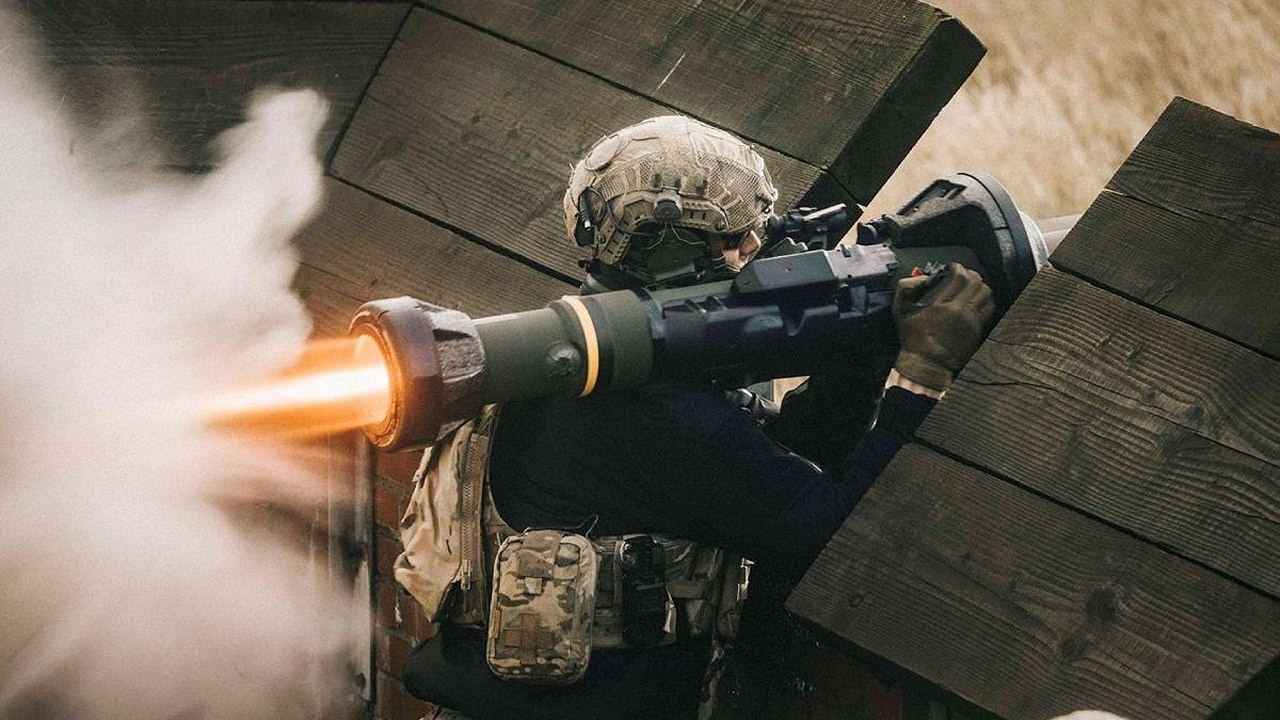Meet the NLAW: For over a year, Ukrainian Forces have been able to stymie the advance of Russian troops. Shipments of Western military equipment have played a great role in Kyiv’s survival, including a variety of advanced anti-tank weapons.
Moscow has lost thousands of tanks throughout its invasion, thanks in part to Sweden’s Next generation Light Anti-tank Weapon, of NLAW.
Earlier this month, NLAW’s manufacturer Saab announced that it expects the highly lethal weapon to reach an annual output of 400,000 units.
Clearly, the NLAW’s effectiveness in destroying Russian tanks has bolstered its export potential.
How Does NLAW Work?
The fire-and-forget missile system entered service in the Swedish, Finnish and British armed forces in 2009, after about a decade of development by contractor Saab Bofors Dynamics. Similar to the American-made Javelin anti-tank missile launcher, NLAW possesses its own on-board guidance system, which allows its operator to remain undetected post-launch. While the Javelin uses infrared homing, NLAW aims its missile at the predicted position of the target.
After the weapon is fired, a 150mm high-explosive anti-tank round travels toward the target using its predicted line of sight targeting. At this point, NLAW’s operator can move to a different location and remain undetected by enemy forces.
Perhaps NLAW’s best characteristic is its weight. At only 28 pounds, any soldier can theoretically carry the anti-tank missile launcher with relative ease. Additionally, NLAW’s soft-launch system allows it to be used in an attack from virtually any location, including the basement of a building, tree tops, or an open field, since the weapon is fired non-explosively. NLAW’s relatively inexpensive cost also makes it a strong export candidate.
While the missile launcher’s near-peer, the Javelin, costs around $250,000 including replacement missiles, NLAW is only $40,000 per unit.
NLAW’s Effectiveness in Ukraine
Prior to Russia’s invasion in February 2022, the UK sent 2,000 NLAW systems to Ukraine. By March, Ukrainian forces revealed that the NLAW and Javelin anti-tank missile systems were far more lethal to Russia’s armored tanks than Ukraine’s own stockpile of Soviet-era weapons. As noted by analyst Harrison Kass, Ukraine attributed roughly 30-40% of Russian tank losses to NLAW specifically, making it the weapon of choice for Ukraine’s infantry.
The Kremlin Hates NLAW
Videos depicting Russian main battle tanks erupting in flames following an NLAW attack have spread rapidly on social media. However, the Kremlin refuses to admit the extent of success Western equipment like the NLAW and Javelin provides to Ukraine’s infantry.
According to Russian state-owned media conglomerate TASS news, “The much-touted Javelin and NLAW man-portable anti-tank missile systems supplied by NATO countries to Ukraine have performed poorly on the battlefield and created numerous setbacks.”
Russia’s claims that all of Ukraine’s anti-tank missile systems are “duds” are clearly a projection of the country’s own military issues. It is widely believed that Russian forces are running out of weapons, especially in light of heavy sanctions imposed by the West. Additionally, the few weapons left in Russia’s dwindling stockpile might be faulty. U.S. intelligence estimated that some of Russia’s guided missiles suffer a failure rate of approximately 60%.
As NLAWs and Javelins continue to take out Russian tanks one by one, the Kremlin is certain to regurgitate more propaganda and misinformation in order to distract from their offensive woes.
Considering Saab’s latest announcement, a shortage of NLAWs is unlikely.
MORE: Is Russia’s Su-57 Felon Stealth Fighter a Total Bust?
MORE: Merkova: Israel Has A Super Tank
MORE: F-35I: Israel Has a Stealth Fighter America Dreams Of
Maya Carlin is a Middle East Defense Editor with 19FortyFive. She is also an analyst with the Center for Security Policy and a former Anna Sobol Levy Fellow at IDC Herzliya in Israel. She has by-lines in many publications, including The National Interest, Jerusalem Post, and Times of Israel.

